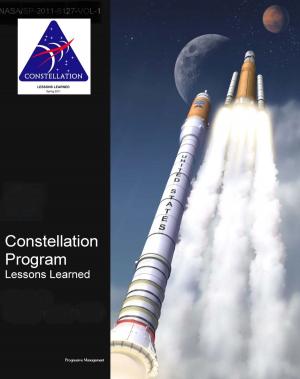Military Air Refueling: Air Force Air Refueling for Naval Operations, History and Practice; Without Tankers, We Cannot; Flight of the Question Mark, KC-10, KC-135, Vietnam, War on Terror, Spaatz
Nonfiction, History, Military, Aviation| Author: | Progressive Management | ISBN: | 9781311423559 |
| Publisher: | Progressive Management | Publication: | September 24, 2014 |
| Imprint: | Smashwords Edition | Language: | English |
| Author: | Progressive Management |
| ISBN: | 9781311423559 |
| Publisher: | Progressive Management |
| Publication: | September 24, 2014 |
| Imprint: | Smashwords Edition |
| Language: | English |
Two excellent books provide a wealth of history and information about mid-air military aircraft refueling.
Air Force Air Refueling for Naval Operations - History, Practice, and Recommendations - Chapter 1 - SIGNIFICANT EVENTS IN THE EVOLUTION OF AIR REFUELING * Flight of Question Mark * Civilian and British Interest in Air Refueling * United States Renews Interest in Air Refueling * Strategic Air Command Develops a Tanker Fleet * Tactical Air Command Desires Tankers * United States Navy Develops Tankers * Single Manager System * Air Refueling in Southeast Asia * Introduction of the KC-10 * Summary * Notes * Chapter 2 - EFFORTS TOWARD UNITED STATES AIR FORCE/NAVY JOINT OPERATIONS * Jointness Grows in 1975-76 * Memorandum of Understanding of 1981 * Memorandum of Understanding of 1982 * Memorandum of Understanding of 1983 * Naval Land-Based Tanker Proposal * Memorandum of Understanding of 1988 * Tanker Management System and Air Force Allocation * Air Force Regulation 55-47, Air Refueling Management * Naval Air Refuelings Increase * Problem Areas * Notes * Chapter 3 - A JOINT AIR REFUELING PUBLICATION IS REQUIRED * Maritime Strategy Includes Use of Land-Based Tankers * Strategic Air Command's Single Manager System and Naval Requirements * Land-Based Tankers Can Increase Naval Capabilities * Additional Land-Based Tanker Enhancements * Enhancements Are Not without Concern * Recommendations * Notes * Appendix A - A Proposed Concept of Operations between the Department of the Air Force and the Department of the Navy on Land-Based Tanker (Air-Refueling) Support for Maritime Operations (Air) * Appendix B - A Chronological Compilation of Navy/Air Force Memorandums of Agreement/Understanding Concerning Aerial Refueling Operations
Air Refueling: Without Tankers, We Cannot...: Flight of the "Question Mark" * Air Refueling Development Lags * Extending "the Reach" * Refueling Fighters * Development of the Modern Air Refuelers * A Wing Perspective of Air Refueling History * Air Refuelers in the Vietnam Conflict * Air Refueling and Airlift * Air Refueling and Special Operations * Operation El Dorado Canyon * Extraordinary Air Refueling Effort: The Persian Gulf War * Air Refueling's Ongoing Role in the War on Terror * The Invisible Aircrews * Appendix 1: General Carl A. "Tooey" Spaatz Trophy * Appendix 2: Brigadier General Ross G. Hoyt Award * Appendix 3: Senior Master Sergeant Albert L. Evans Award
On 1 January 1929, a tri-engined Fokker C-2 aircraft, with a crew of five aboard, climbed into the southern California sky. This aircraft, dubbed the Question Mark, was not history's first air refueling mission, but it played a crucial role in the beginning of air refueling efforts and in the development of the US Army Air Corps. In fact, the first attempts at air refueling started in 1921 with five-gallon gas cans. On 2 October 1921, a US Navy lieutenant in the back of a Huff-Daland HD-4 used a grappling hook to snag a gas can from a float in the Potomac River, and on 21 November, a wing walker with a gas can strapped to his back climbed from an airborne Lincoln Standard to a Curtiss JN-4 and proceeded to pour the gas into the aircraft's tank. While these two publicity stunts deserve mention, the first air-to-air refueling using a gravity-flow hose occurred in 1923. Earlier that year, the US Army Air Service had equipped two De Haviland DH-4Bs with inflight hoses. After installation, testing, and preparation, the Army Air Service was ready to put it to use, and on 27 June, one of the DH-4s flew a 6-hour and 38-minute flight that included two air refuelings. Testing continued through much of 1923 until 18 November, when the hose became entangled in the right wings of the two aircraft. Lieutenant P. T. Wagner, the pilot of the refueler, was killed in the accident.
Two excellent books provide a wealth of history and information about mid-air military aircraft refueling.
Air Force Air Refueling for Naval Operations - History, Practice, and Recommendations - Chapter 1 - SIGNIFICANT EVENTS IN THE EVOLUTION OF AIR REFUELING * Flight of Question Mark * Civilian and British Interest in Air Refueling * United States Renews Interest in Air Refueling * Strategic Air Command Develops a Tanker Fleet * Tactical Air Command Desires Tankers * United States Navy Develops Tankers * Single Manager System * Air Refueling in Southeast Asia * Introduction of the KC-10 * Summary * Notes * Chapter 2 - EFFORTS TOWARD UNITED STATES AIR FORCE/NAVY JOINT OPERATIONS * Jointness Grows in 1975-76 * Memorandum of Understanding of 1981 * Memorandum of Understanding of 1982 * Memorandum of Understanding of 1983 * Naval Land-Based Tanker Proposal * Memorandum of Understanding of 1988 * Tanker Management System and Air Force Allocation * Air Force Regulation 55-47, Air Refueling Management * Naval Air Refuelings Increase * Problem Areas * Notes * Chapter 3 - A JOINT AIR REFUELING PUBLICATION IS REQUIRED * Maritime Strategy Includes Use of Land-Based Tankers * Strategic Air Command's Single Manager System and Naval Requirements * Land-Based Tankers Can Increase Naval Capabilities * Additional Land-Based Tanker Enhancements * Enhancements Are Not without Concern * Recommendations * Notes * Appendix A - A Proposed Concept of Operations between the Department of the Air Force and the Department of the Navy on Land-Based Tanker (Air-Refueling) Support for Maritime Operations (Air) * Appendix B - A Chronological Compilation of Navy/Air Force Memorandums of Agreement/Understanding Concerning Aerial Refueling Operations
Air Refueling: Without Tankers, We Cannot...: Flight of the "Question Mark" * Air Refueling Development Lags * Extending "the Reach" * Refueling Fighters * Development of the Modern Air Refuelers * A Wing Perspective of Air Refueling History * Air Refuelers in the Vietnam Conflict * Air Refueling and Airlift * Air Refueling and Special Operations * Operation El Dorado Canyon * Extraordinary Air Refueling Effort: The Persian Gulf War * Air Refueling's Ongoing Role in the War on Terror * The Invisible Aircrews * Appendix 1: General Carl A. "Tooey" Spaatz Trophy * Appendix 2: Brigadier General Ross G. Hoyt Award * Appendix 3: Senior Master Sergeant Albert L. Evans Award
On 1 January 1929, a tri-engined Fokker C-2 aircraft, with a crew of five aboard, climbed into the southern California sky. This aircraft, dubbed the Question Mark, was not history's first air refueling mission, but it played a crucial role in the beginning of air refueling efforts and in the development of the US Army Air Corps. In fact, the first attempts at air refueling started in 1921 with five-gallon gas cans. On 2 October 1921, a US Navy lieutenant in the back of a Huff-Daland HD-4 used a grappling hook to snag a gas can from a float in the Potomac River, and on 21 November, a wing walker with a gas can strapped to his back climbed from an airborne Lincoln Standard to a Curtiss JN-4 and proceeded to pour the gas into the aircraft's tank. While these two publicity stunts deserve mention, the first air-to-air refueling using a gravity-flow hose occurred in 1923. Earlier that year, the US Army Air Service had equipped two De Haviland DH-4Bs with inflight hoses. After installation, testing, and preparation, the Army Air Service was ready to put it to use, and on 27 June, one of the DH-4s flew a 6-hour and 38-minute flight that included two air refuelings. Testing continued through much of 1923 until 18 November, when the hose became entangled in the right wings of the two aircraft. Lieutenant P. T. Wagner, the pilot of the refueler, was killed in the accident.















